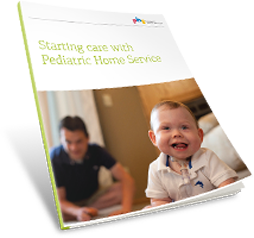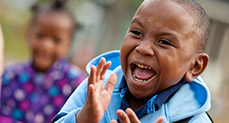Secondary Trauma in Caregivers
Monica Handlos, MSW, LICSW, is the Clinical Social Worker at PHS. In this role, she provides mental health for children, adolescents and adults, as well as counseling for short-term therapeutic interventions and long-term planning. She also facilitates social service needs for families, including financial resources, insurance, grants, basic living (transportation, house, food shelves, etc.), waivers, energy assistance, and more as needed.
Recently, Monica attended a training called Secondary Trauma: Building Resilience, where she expanded her knowledge of secondary trauma and how it can affect caregivers. We asked her to share some insights with us, since this is an issue that can affect so many caring for a child with medical complexities.
If you or a family members are in need of social services or mental health from PHS, call 651-642-1825 and ask to speak with the social worker.
Last month, I attended a training called “Secondary Trauma: Building Resilience.” It was presented by Jeremy Mork, MSW, LICSW and Cynthia Packer, MSW, LICSW from MITH Program, State of MN, Direct Care and Treatment, Community Based Services.
I’m sharing my insights with you today because the training was excellent and I walked away with lot of information that our PHS family caregivers and health care partners may find useful.
Here are my top 5 takeaways:
- Secondary Trauma is also referred to as Compassion Fatigue. It is the experience of people who are exposed to the trauma of others, through helping or wanting to help, experiencing trauma. As a result of this exposure their own traumatic symptoms and reactions develop.
- All professionals and family members caring for a child with medical complexities are at risk of secondary trauma
- Symptoms to be aware of with secondary trauma include;
- Emotional: anger, sadness, grief, anxiety, depression, and overwhelmed
- Physical: headaches, stomach aches, increased fatigue or illness, and sleep problems (too much or too little)
- Personal: Isolation, irritability, moody, increased risk for alcohol or substance use, pessimism
- Who is most vulnerable to secondary trauma?
- Individuals who have children who have experienced trauma
- Individuals who have had their own history of trauma
- Individuals who have never experienced working with or interacting with patients who have experienced trauma
- Individuals with a limited support system
- How should we address secondary trauma?
- Recognize negative thoughts
- Evaluate the situation
- Modify negative thoughts into positive or neutral ones
- Develop a plan self-care plan
- Build it ahead of time like a first aid kit. We know caring for others can and will induce secondary trauma. Be prepared. What will you do if you become overwhelmed, have increased headaches and fatigue, and are becoming moody?
- Try to get a mix of sleep time, physical time (some form of exercise), focus time, downtime, playtime, and connecting time each day to help decrease the risk of secondary trauma
Originally published: June 27, 2014




Thank you for sharing this important information that caregivers – and those around them – should learn about.